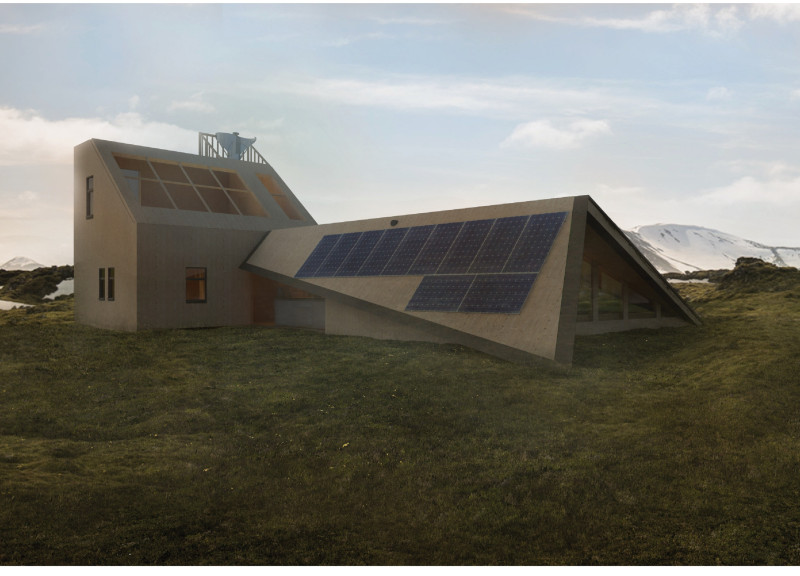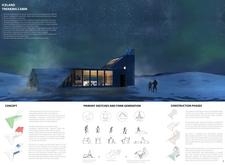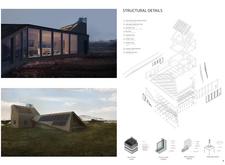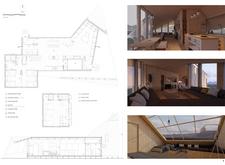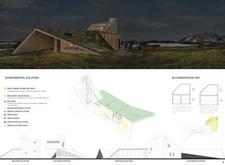5 key facts about this project
At its core, the Trekking Cabin functions as a versatile lodging option for outdoor enthusiasts. It caters to the needs of individuals and groups looking to immerse themselves in Iceland's unique landscape, offering a comfortable space to rest and recharge after a day of exploration. The design prioritizes user experience, highlighting the importance of communal areas for social interaction, while also providing adequate privacy in sleeping quarters.
The architectural approach taken in the design of the Trekking Cabin is unique, as it combines traditional Icelandic building techniques with contemporary design principles. The structure is notably influenced by the shape and functionality of Icelandic turf houses, with an emphasis on the materiality that resonates with the environment. The use of natural materials, particularly wood and turf, allows the building to blend into the surroundings seamlessly. The roof is skillfully landscaped with soil and vegetation, contributing to the cabin's insulation while promoting biodiversity.
A significant component of the architectural design is its attention to energy efficiency and sustainability. The project features double-glazed windows, which not only maximize natural light but also contribute to thermal performance. Additionally, the inclusion of solar panels and a wind turbine underscores a commitment to renewable energy sources, aiming to minimize the ecological footprint of the cabin. Rainwater harvesting systems are thoughtfully integrated, ensuring a sustainable water supply for occupants.
The layout of the cabin itself is both functional and welcoming. Open living and dining areas facilitate gatherings and communal experiences, reinforcing the notion of togetherness among trekkers. The arrangement of spaces allows for an easy flow between different areas, promoting both interaction and comfort. Sleeping quarters are partitioned yet spacious enough to provide a restful environment, serving the dual purpose of privacy and comfort.
One of the unique aspects of this design is its responsive approach to the challenging geographical conditions of Iceland. The structure is built to withstand harsh weather, with robust steel beams as the primary building supports, ensuring structural stability. Furthermore, the project employs a prefabrication approach that simplifies the construction process, allowing for a swift assembly on-site and reducing potential disturbances to the surrounding landscape.
The Trekking Cabin embodies the principles of sustainable architecture while embracing modern construction techniques. Its focus on integrating renewable energy solutions and utilizing natural materials places it within the broader context of environmentally responsible design. This attention to detail and forward-thinking approach to architecture not only results in a practical shelter but also creates an enriching environment that fosters a deeper connection between people and nature.
For a more in-depth understanding of the architectural plans, sections, and design ideas underlying the Trekking Cabin, interested readers are encouraged to explore the project presentation. Engaging with these elements will provide further insight into the thoughtful architectural strategies implemented in this unique design.


